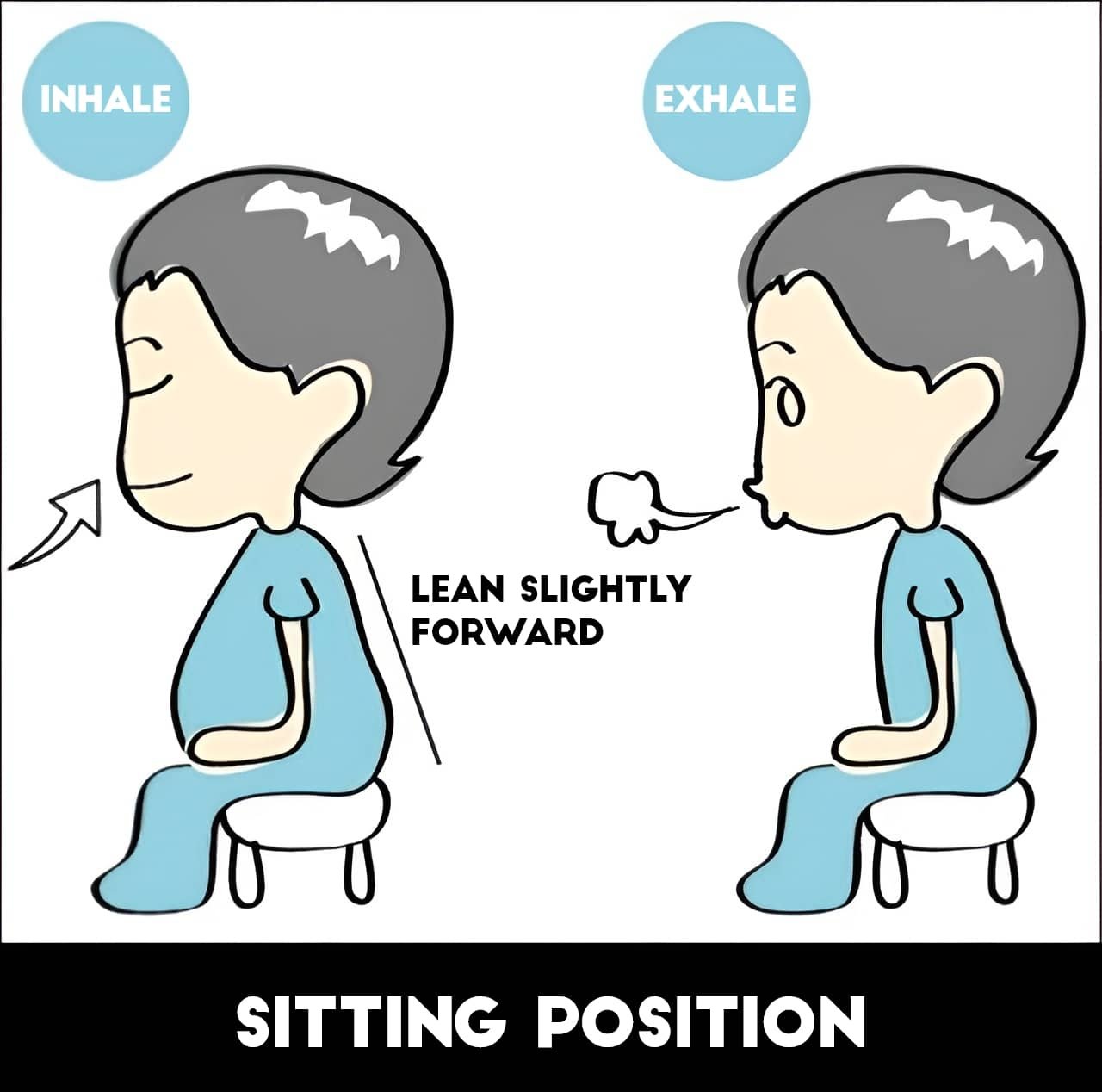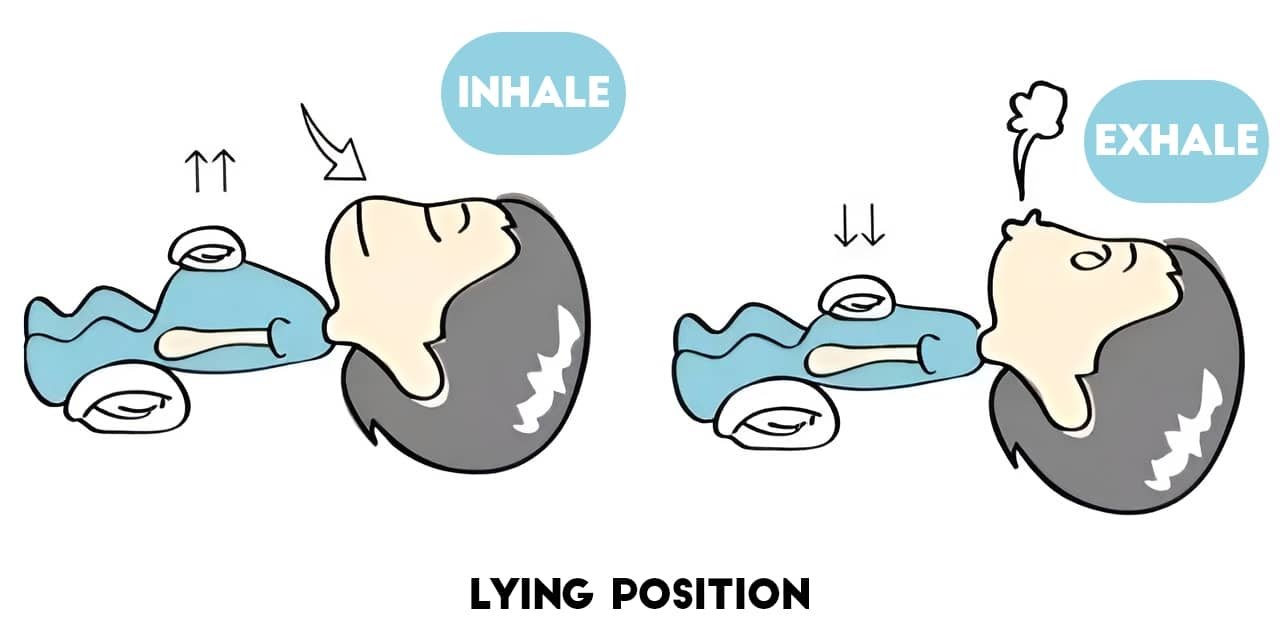Daoist Breathing Techniques: Activating Deep Life Energy Sources through Abdominal Breathing
Daoist Abdominal Breathing: A Guide to Healthy Breathing
Breathing is something we do every moment, yet the fast-paced nature of modern life often leads to quicker, shallower breaths. Fast breathing accelerates the heart rate, speeds up metabolism, and can shorten lifespan. This is why ancient wisdom emphasized the importance of breathing techniques for health. Today, I’ll teach you how to breathe correctly and healthily.
What is Abdominal Breathing?
Abdominal breathing involves the diaphragm moving up and down. When you inhale, the diaphragm descends, pushing internal organs downward and causing the abdomen to expand rather than the chest. During exhalation, the diaphragm rises higher than usual, allowing for deeper breaths that expel more stagnant carbon dioxide from the lungs.
Breathing Techniques
There are two common breathing techniques: chest breathing and abdominal breathing.
-
Chest Breathing: This method relies on the movement of the ribs and sternum. When you inhale, the chest expands in all directions. Because the air goes directly into the lungs, the chest cavity enlarges while the abdomen remains flat.
-
Abdominal Breathing: This technique focuses on diaphragm movement, increasing the vertical space of the chest. Typically, a chest breath takes about 10-15 seconds, allowing approximately 500 milliliters of air to be inhaled. In abdominal breathing, as the diaphragm lowers, abdominal pressure increases, creating the sensation that air is filling the abdomen. Placing a hand on your navel will feel a gentle up-and-down motion.
Most people, especially women, tend to use chest breathing. This method involves minimal movement of the ribs and slight expansion of the chest, often leaving many alveoli at the base of the lungs underutilized. This can lead to insufficient oxygen supply to various body organs over time, contributing to chronic diseases.
Learning to breathe properly can significantly enhance your oxygen intake, purify your blood, and strengthen lung tissue. This helps boost your immune system against colds, bronchitis, asthma, and other respiratory illnesses. Additionally, engaging the diaphragm and intercostal muscles during breathing increases overall vitality and endurance, leaving you feeling more energized. You can check your breathing style: if your chest and abdomen tighten during inhalation and bulge during exhalation, your technique needs improvement.
Benefits of Abdominal Breathing
Increases Lung Capacity: This technique expands the diaphragm’s range of motion, directly impacting lung ventilation. Research shows that for every centimeter the diaphragm descends, lung capacity increases by 250 to 300 milliliters. Consistent abdominal breathing can expand diaphragm movement by four centimeters over six months, which is beneficial for improving lung function and recovering from conditions like emphysema.
Reduces Lung Infections: Abdominal breathing can lower the risk of pneumonia and other respiratory infections.
Enhances Abdominal Organ Function: It improves digestion and supports liver function by promoting bile secretion. Additionally, it can help lower blood pressure, making it advantageous for those with hypertension.
Calms the Mind and Sharpens Intelligence: This breathing technique is beneficial for mental clarity and relaxation.
By incorporating abdominal breathing into your daily routine, you can cultivate better health and well-being.
3. Practice Methods for Abdominal Breathing
Start by lying on your back or sitting comfortably in a meditative posture, relaxing your whole body. Spend some time observing your natural breathing. Place your right hand on your abdomen (navel) and your left hand on your chest. When you inhale, expand your abdomen fully while keeping your chest still. When you exhale, contract your abdomen fully, again keeping your chest still. Repeat this cycle, maintaining a consistent rhythm with each breath, and pay close attention to the rise and fall of your abdomen.
After some practice, you can remove your hands and simply focus your awareness on the breathing process. Don’t tense up or force it; beginners should particularly pay attention to the practice process and its effects on the body. As you inhale, feel the breath moving through your nostrils and throat, concentrating in the lungs. As the lung volume increases while keeping the chest still, the diaphragm will be forced downward, causing the abdomen to slightly bulge outward. During exhalation, pull the abdomen inward, raising the diaphragm and expelling stale air from the body.
Imagine your abdomen as a balloon: inhale through your nose to make your abdomen swell, pause for a second or two, then exhale through your mouth until your abdomen sinks back in. Aim for about five to six breaths per minute. It’s recommended to practice twice daily, ideally around 10 AM and 4 PM, for about 10 minutes each time.
The key to abdominal breathing is to reach the “limit” with both inhalations and exhalations—inhale until you can’t take in more, and exhale until you can’t expel more. Similarly, the abdomen should expand and contract maximally; ideally, each breath should reach the lower dantian.
Practicing abdominal breathing is primarily for health benefits, as it can intake two to three times more oxygen than normal breathing, making it useful for treating various internal organ conditions. For instance, if you have a headache, you can stand up, inhale deeply, and then lift your heels off the ground to force the air up to your head before exhaling.
Abdominal deep breathing is simple and can be practiced while standing, sitting, or lying down, although lying on your bed is preferable. While lying on your back, loosen your belt, relax your limbs, focus your mind, and eliminate distractions—this can be considered entering a Qigong state. Inhale slowly through your nose, allowing your abdomen to rise; hold each breath for 10-15 seconds, then exhale slowly, aiming for about four breaths per minute.
The duration of abdominal deep breathing practice can vary for each individual and can be combined with chest breathing for an alternating respiratory exercise. By consistently practicing abdominal deep breathing daily, you can achieve significant health benefits, often with surprising results.
4. Precautions for Abdominal Breathing
Breathe Deeply and Slowly: Ensure your breaths are long and deep.
Inhale Through the Nose, Exhale Through the Mouth: Use your nose for inhalation and your mouth for exhalation.
Timing for Breathing: Aim for a cycle of about 15 seconds for each breath. Inhale deeply (allowing your abdomen to rise) for 3-5 seconds, hold your breath for 1 second, then exhale slowly (contracting your abdomen) for 3-5 seconds, and hold your breath again for 1 second.
Duration of Practice: Each session should last between 5 to 15 minutes, with a goal of 30 minutes being ideal.
Adjust Based on Health: For those in good health, you can extend the breath-holding time and aim for a slower, deeper rhythm. If your health is not as strong, you can skip the breath-holding phase but ensure you fully inhale. Practice 1-2 times daily, in sitting, lying, walking, or running positions, until you feel slightly warm and break a light sweat. Aim for 50-100 rounds of abdominal expansion and contraction. If you experience excess saliva during breathing, you can swallow it slowly.
5. Benefits of Abdominal Breathing
Generally, mammals utilize abdominal breathing, which allows for the full functioning of the heart and lung cells, increases lung capacity, enhances heart function, and boosts the digestive system’s activity. This, in turn, strengthens and activates these functions, aiding in the elimination of toxins accumulated in the intestines and releasing internal stress.
Why is abdominal breathing so vital for life? Because the abdominal cavity houses all the organs except for the heart, brain, and lungs. This includes the digestive system, blood formation system, reproductive and urinary systems, part of the endocrine system, and the lymphatic system, all of which contain numerous blood vessels and nerves. Therefore, the abdominal cavity is extremely important, making it crucial to strengthen abdominal breathing and promote movement within the abdominal cavity.
The benefits of abdominal breathing also extend to altering abdominal pressure, which increases chest cavity volume, raises negative pressure in the chest cavity, and decreases pressure in the superior and inferior vena cavae, accelerating blood return. Due to the regular fluctuations in abdominal pressure, the activity of internal organs is enhanced, improving blood circulation in the digestive tract, promoting the digestive absorption functions, encouraging intestinal peristalsis, preventing constipation, expediting the elimination of toxins, and reducing self-poisoning, thereby slowing the aging process. Additionally, it is effective in preventing colorectal cancer and hemorrhoids.
Moreover, abdominal breathing includes pelvic movements. While performing deep abdominal breaths, incorporate contraction and relaxation of the anal sphincter and abdominal lifting. This promotes blood flow in the pelvic region, as the organs in the pelvis are integral to the endocrine and reproductive-urinary systems, which cannot be overlooked.
Abdominal breathing can be practiced while running, walking, sitting, or lying down during breaks and leisure time. This practice is convenient and easy to implement; if done daily, it can significantly help eliminate abdominal fat, expel waste from the abdomen, improve blood circulation in the abdominal area, and enhance the vitality of the abdominal and pelvic organs.
Related Kung Fu
Ancient Taoist Contemplative Meditation(10 Lessons)
This meditation technique is an authentic Taoist practice, a heart-mind secret based on ancient Chinese wisdom. The technique is simple and easy to learn, yet delivers outstanding results.
Longevity Qigong(9 Lessons)
Longevity Qigong is a powerful martial arts practice that aligns the body with nature. Through eight movements, it unblocks energy pathways, corrects posture, and restores internal balance. This practice boosts health, prevents illness, and extends life. Pairing it with the Vajra Exercise amplifies its benefits.
Vajra Qigong(9 Lessons)
Vajra Qigong harmonizes the body and mind through eight movements that channel internal energy to unblock meridians, correct spinal misalignments, and restore nervous system function. It balances internal organs, expels harmful energies, and promotes overall health and longevity.





